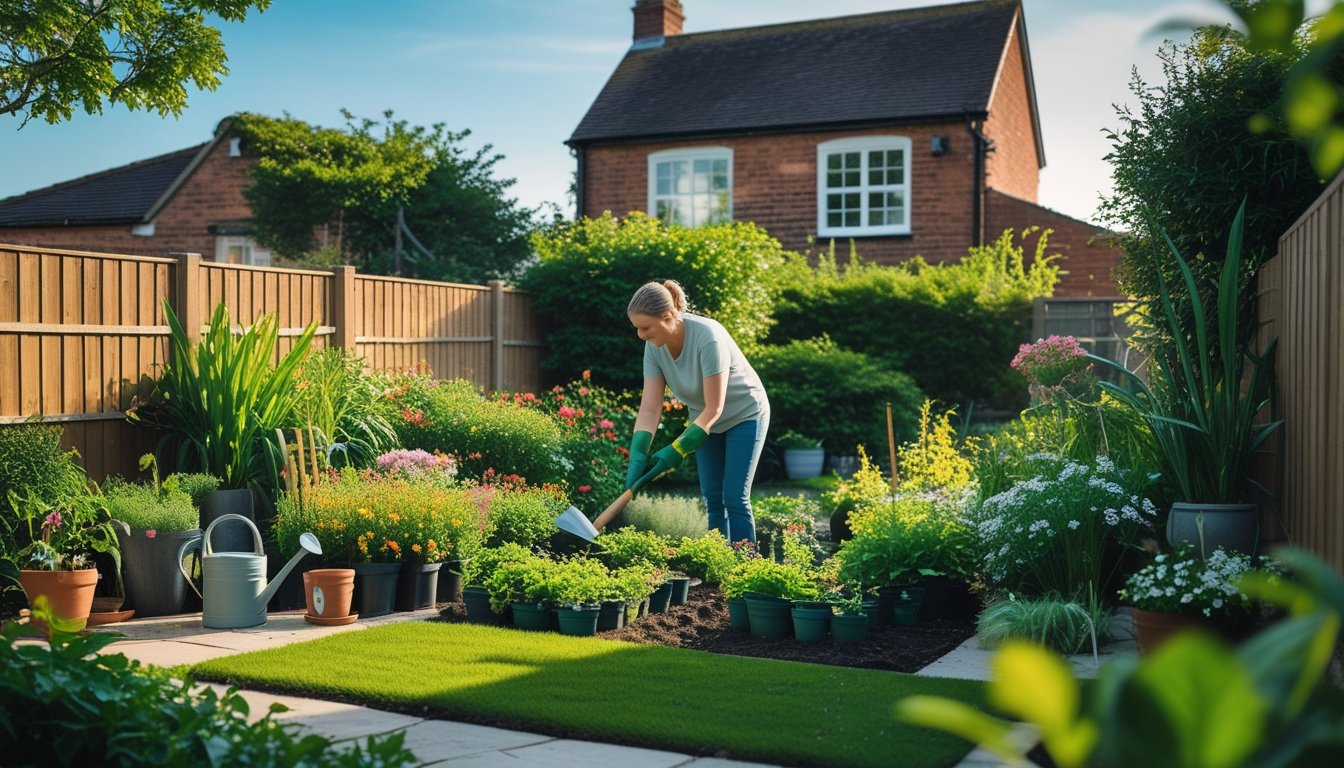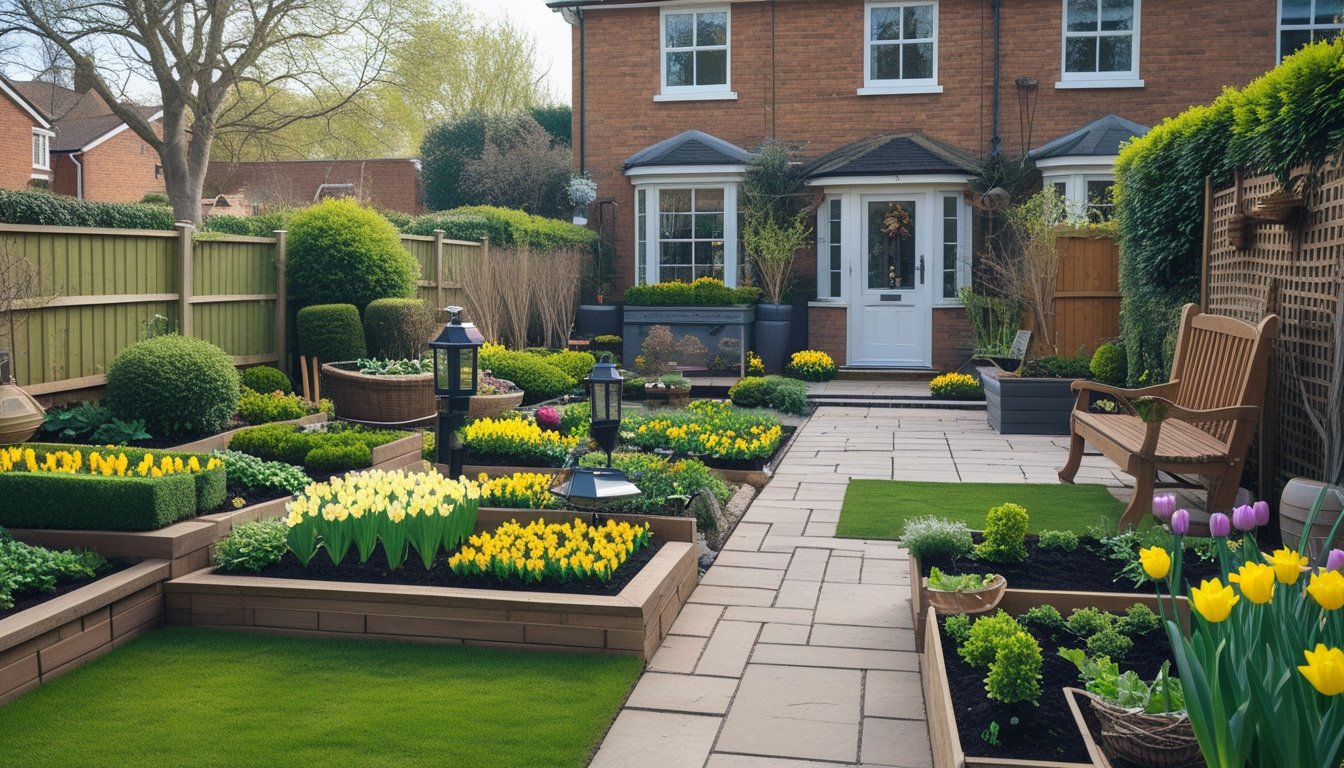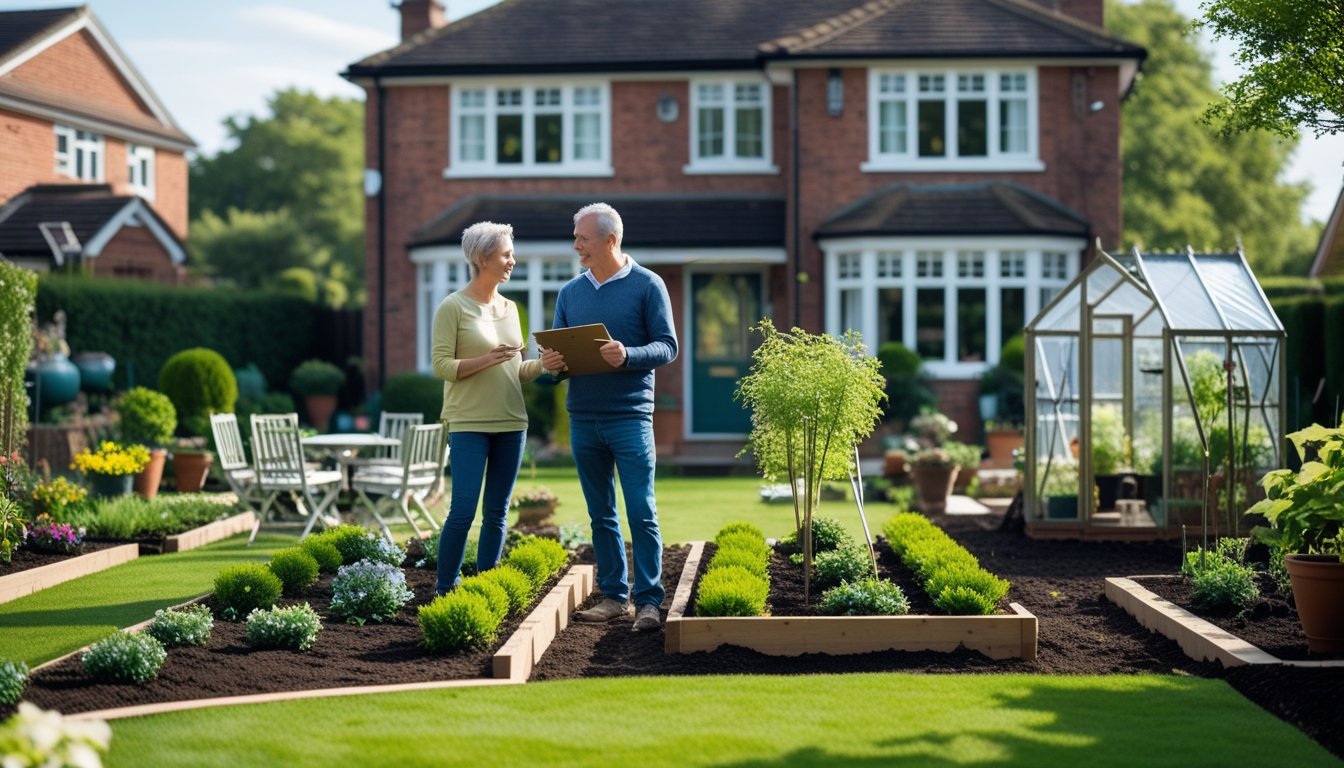Late updated: 01 Jul 2025 15:07
Written by: Oliver Bennett
Planning A Garden Makeover For Your UK Home: Essential Tips and Ideas
Transforming a garden into a vibrant outdoor oasis is a rewarding endeavour that adds beauty and value to any UK home. By carefully planning each step of your garden makeover, you can create a stunning outdoor space that reflects your personal style and meets your practical needs. From selecting the right plants to utilising available tools, a well-executed plan ensures a successful garden transformation.

We embark on this journey by focusing on essential elements of garden design, considering factors like climate, soil type, and sun exposure, which are crucial for the selection of suitable plants. Moreover, integrating design elements such as pathways, seating areas, and vertical gardening can effectively enhance functionality and aesthetics.
Planning a garden makeover requires careful thought and creativity. With numerous garden makeover ideas available, it is important to choose the ones that best suit our space and lifestyle. Our guide will walk us through the transformative process, offering insights and inspiration for creating a living masterpiece right outside our door.
Key Takeaways
- Plan thoroughly by considering climate and space needs.
- Incorporate functional and aesthetic design elements.
- Choose makeover ideas that align with personal style and lifestyle.
Planning Your Garden Makeover
Transforming our garden requires careful consideration of space, style, and budget. We explore how to assess our outdoor area, define the style suitable for our needs, and plan effectively.
Assessing Your Outdoor Space
Understanding the unique characteristics of our garden is crucial. We start by examining the garden's size, shape, and features such as slopes or uneven surfaces. Soil type and drainage capabilities also influence design decisions. Testing soil pH helps determine suitable plants. We look for natural light patterns during the day, identifying shady and sunny spots. Privacy is another consideration—tall fences or hedges may be needed. Recognising these elements informs the practical aspects of the layout and style.
Defining Your Garden Style and Needs
Determining the garden style involves considering our lifestyle and preferences. Garden design can range from contemporary to cottage, each with distinct characteristics. Are we seeking a lush oasis or a minimalist retreat? We must consider how we use the space, whether for outdoor living or entertaining guests. Creating a mood board with inspirations can help refine our vision. The style and functionality need to align, ensuring the space reflects our personality and meets daily needs.
Budgeting and Scheduling
Effective budgeting ensures that our garden makeover is realistic and achievable. We begin by identifying key elements such as plants, furniture, and construction costs. It's helpful to create a table with estimated prices for each component. Setting priorities—what's essential versus optional—guides spending decisions. Scheduling the project involves mapping out phases, from initial planning to completion, factoring in lead times for materials and planting seasons. A clear plan helps us stay organised and on track.
Garden Makeover Features and Design Elements

Transforming our garden into a serene, functional area involves incorporating various features and design elements. From the sturdy structures that form the backbone of our spaces to the vibrant plant life that adds charm, every detail contributes to the final look and feel.
Hard Landscaping and Structures
Hard landscaping creates the structural foundation of our garden makeover. It includes decking, gravel paths, and terraces that define the layout. Installing a pergola or garden wall adds vertical interest, while raised beds offer both aesthetic appeal and practical plant space.
Trellises can support climbing plants, enhancing privacy and beauty. Choosing materials like stone or brick can ensure durability and style. We should consider the local climate and landscape when selecting these elements to maximize longevity and integration.
Soft Landscaping and Plant Selection
Soft landscaping gives our garden its life and colour. We equip our space with a diverse selection of native plants, evergreens, or vibrant flowers in container gardens and hanging baskets. Choosing native plants ensures that our garden is eco-friendly and low-maintenance, while evergreens provide year-round structure.
Mulch and compost are essential for maintaining soil health, suppressing weeds, and retaining moisture. Let’s also plan vertical gardens or a living wall to introduce greenery without taking up floor space, enhancing urban gardens where room is limited.
Outdoor Living and Entertaining
Outdoor living transforms our garden into an extension of our home. Installing garden furniture creates inviting areas for relaxation and socializing. An outdoor kitchen or entertaining space allows us to host gatherings, making our garden the perfect venue for al fresco meals.
We might consider adding a fire pit or firepit for warmth, extending our garden use into cooler evenings. Designing around these elements ensures that we create functional zones without overcrowding, thus maintaining a pleasant flow.
Water Features and Accents
Water features such as ponds or fountains bring tranquillity and a sense of movement. Including stepping stones leading to these features invites exploration. Gravel and stones around water accents create a pleasing contrast and assist with drainage.
The sound of water, aside from being soothing, can mask city noise, making our garden feel like a true retreat. It’s crucial to maintain water features to prevent stagnation and encourage wildlife. By choosing accents that blend seamlessly with the environment, we add subtle beauty and harmony to the garden.
Frequently Asked Questions

In planning a garden makeover, it's vital to consider design ideas for beginners, free tools, reliable apps, and methods for small spaces. Identifying key design considerations and finding templates or inspiration will help make the process smoother.
What are some simple garden design ideas suitable for beginners?
Creating a beginner-friendly garden involves choosing low-maintenance plants. Using stepping stones or creating a small herb garden can add style without complexity. Focus on symmetry and layering plants of varying heights to achieve a balanced look.
Where can I find a free garden layout planner?
Several websites offer free garden layout planners. These tools allow you to experiment with different plant placements and designs before committing. Visiting nursery or gardening websites often leads to discovering valuable tools for planning.
Can you recommend a reliable garden design app for homeowners?
One of the popular apps among homeowners is "Garden Planner." It provides detailed design options and is user-friendly. Through its drag-and-drop feature, we can experiment with various layouts and plant arrangements efficiently.
How can I create a garden makeover plan for a small space?
In small spaces, vertical gardening and multi-functional furniture can maximise the area. Incorporating mirrors or reflective surfaces may also create a sense of depth. Consider plants that grow upwards rather than outwards to utilise space efficiently.
What are the key considerations when designing a garden from scratch?
When starting from scratch, understanding soil type and sunlight exposure is essential. It’s crucial to check local regulations and planning permissions. Establishing a theme or a focal point will guide the overall design and plant selection.
Where can I find inspiration and templates for garden design?
Books on garden design and online forums offer a wealth of inspiration. Websites dedicated to gardening often provide templates and design ideas. Engaging with gardening communities or attending garden shows can also spark creativity and provide new ideas.
